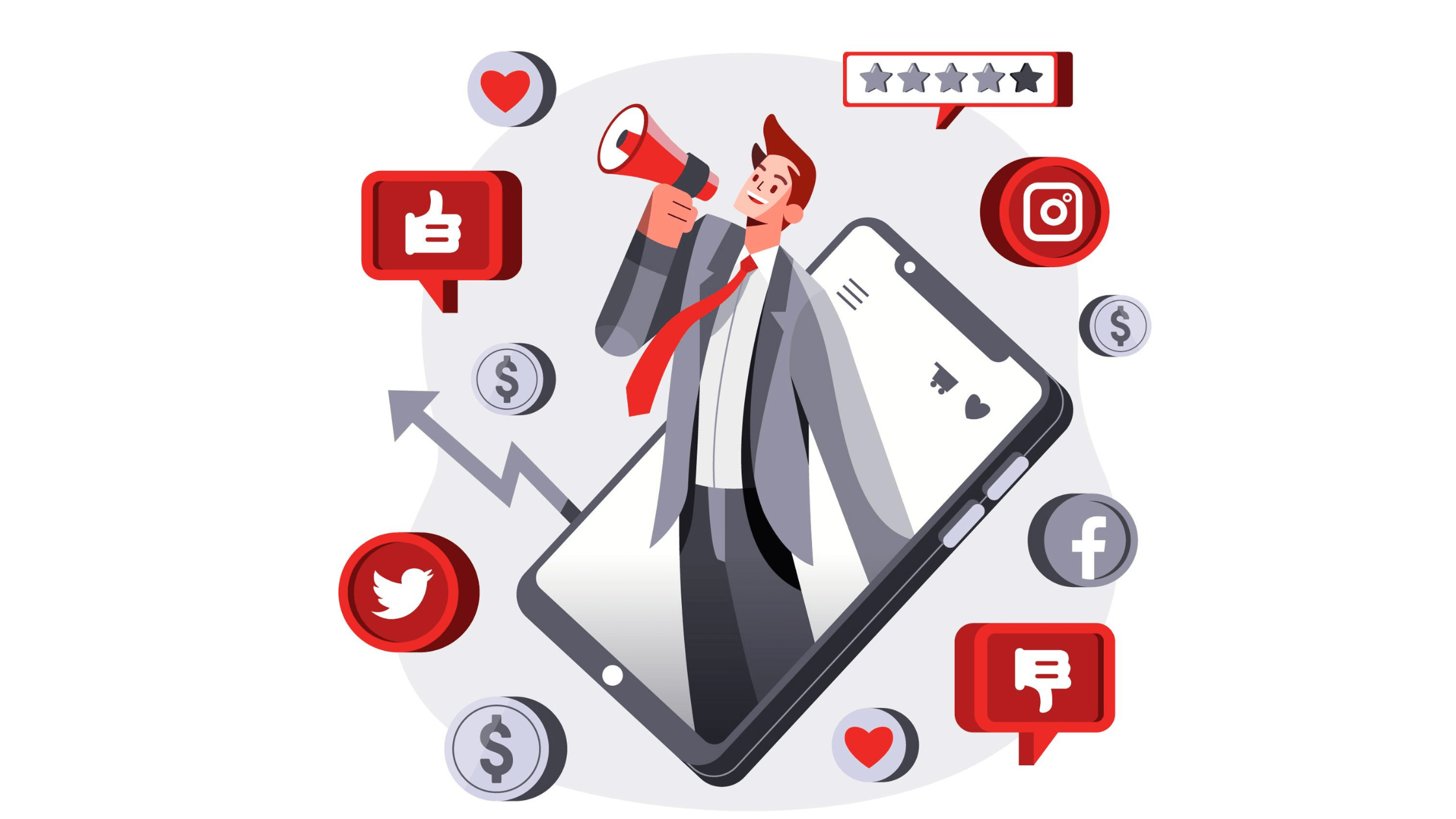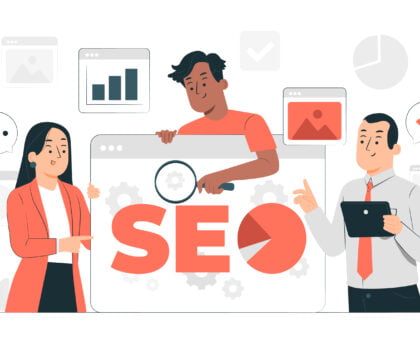Digital marketing refers to the use of digital channels and technologies to promote a brand, product, or service. It involves a wide range of tactics and techniques such as social media marketing, email marketing, search engine optimization (SEO), pay-per-click (PPC) advertising, content marketing, and mobile marketing, among others.
One of the main benefits of digital marketing is that it allows businesses to reach a large audience in a cost-effective way. Digital channels are often more targeted and measurable than traditional marketing channels, allowing businesses to track their return on investment (ROI) and make data-driven decisions about their marketing strategies.
However, digital marketing also requires a deep understanding of the target audience and the ability to adapt to the ever-evolving digital landscape. It involves creating engaging content, building strong relationships with customers, and staying up-to-date with the latest trends and technologies in the digital space.
Digital marketing also allows businesses to collect data and analytics about their audience and marketing campaigns, which can help inform future decisions and improve ROI.
Overall, digital marketing is a crucial aspect of any modern marketing strategy, as more and more consumers rely on digital channels to make purchasing decisions and interact with brands.
What is Digital Marketing?
Digital marketing is the practice of promoting and selling products or services using digital channels, technologies, and strategies. This includes a variety of tactics, such as social media marketing, email marketing, content marketing, search engine optimization (SEO), pay-per-click (PPC) advertising, and more.
The goal of digital marketing is to reach and engage with a targeted audience in a way that is cost-effective, measurable, and impactful. By leveraging digital channels, businesses can build brand awareness, generate leads, and drive sales.
inbound marketing vs digital marketing
Inbound marketing and digital marketing are two different approaches to marketing, although they share many similarities. Digital marketing is a broader term that encompasses all types of marketing activities that use digital channels, such as search engines, social media, email, and mobile apps, to reach and engage with customers. Inbound marketing, on the other hand, is a specific type of digital marketing that focuses on attracting customers through relevant and valuable content, rather than interrupting them with traditional advertising.
While both inbound and digital marketing involve the use of digital channels to reach customers, inbound marketing emphasizes a customer-centric approach that prioritizes providing value to customers and building long-term relationships. Inbound marketing typically involves the creation of high-quality content, such as blog posts, videos, and e-books, that are designed to attract and engage customers at various stages of the sales funnel.
Digital marketing, on the other hand, encompasses a wider range of activities, including SEO, PPC advertising, email marketing, social media marketing, and more. While these activities may also involve the creation and distribution of content, they often prioritize immediate results and may be more focused on driving conversions and sales.
In summary, while both inbound marketing and digital marketing involve the use of digital channels to reach and engage with customers, inbound marketing is a specific type of digital marketing that emphasizes a customer-centric approach and focuses on building long-term relationships through the creation of high-quality content.
Benefits of digital marketing
There are many benefits of digital marketing, including:
Better targeting:
Digital marketing enables businesses to target specific customer segments based on their demographics, interests, and behaviours, which can result in more effective and efficient marketing campaigns.
Increased engagement:
Digital marketing provides businesses with the ability to engage with their customers in real-time through social media, email, and other digital channels. This can help to build brand loyalty and trust, leading to increased sales and customer retention.
Greater visibility:
Digital marketing can improve a business’s visibility in search engine results, making it easier for customers to find and discover their products or services.
Increased brand awareness:
Digital marketing can help businesses build their brand and increase brand awareness, by leveraging the power of social media, content marketing, and other forms of digital advertising.
Cost-effective:
Digital marketing is often more cost-effective than traditional marketing methods, which can be expensive and difficult to measure. Digital channels allow businesses to reach a targeted audience at a lower cost, while also providing detailed analytics to measure the effectiveness of their campaigns.
Better measurement and analysis:
Digital marketing enables businesses to track and analyse their marketing campaigns in real-time, providing valuable insights into customer behaviour and the effectiveness of their marketing efforts.
Increased reach:
Digital marketing allows businesses to reach a larger audience than traditional marketing methods. With billions of people using the internet every day, businesses have the opportunity to connect with potential customers from all over the world.
Targeted:
Digital marketing allows businesses to target specific demographics, interests, and behaviours. This helps to ensure that their marketing efforts are reaching the right audience and can lead to higher conversion rates.
Overall, digital marketing is essential for businesses of all sizes in today’s digital age. It allows businesses to reach a larger audience, measure their success, and engage with customers in a way that is cost-effective and impactful.
Types of digital marketing?
There are several types of digital marketing. Here are some of the most common ones:
Search Engine Optimization (SEO):
Search Engine Optimization (SEO) is the practice of optimising a website to improve its visibility and ranking on search engines like Google. SEO involves a variety of techniques, including optimising website content and structure, building high-quality backlinks, and using keywords and phrases relevant to the business and industry.
The goal of SEO is to improve a website’s organic search rankings, which can lead to increased visibility, traffic, and sales. SEO is an ongoing process that requires consistent effort and attention, as search engine algorithms and ranking factors are constantly evolving.
Some common SEO techniques include:
Keyword research: This involves identifying the keywords and phrases that potential customers are using to search for products or services related to a business.
On-page optimization: This involves optimizing website content, titles, tags, and meta descriptions to make it more search engine friendly.
Off-page optimization: This involves building high-quality backlinks from other websites to improve the website’s authority and credibility.
Technical SEO: This involves optimizing website structure, speed, and performance to improve user experience and search engine rankings.
Local SEO: This involves optimizing a website for local search results, including optimizing for Google My Business listings and local keywords.
SEO is an essential aspect of any digital marketing strategy, as it can help businesses to reach a larger audience, generate more traffic, and ultimately increase sales and revenue.
Social Media Marketing:
Social media marketing is the practice of using social media platforms like Facebook, Twitter, Instagram, LinkedIn, and others to promote a business, engage with customers, and build brand awareness. Social media marketing involves creating and sharing content, running paid advertising campaigns, and interacting with customers and followers.
The goal of social media marketing is to build a community of followers, engage with them on a regular basis, and promote a business’s products or services. Social media marketing can help businesses to increase brand awareness, drive website traffic, and generate leads and sales.
Some common social media marketing techniques include:
Content creation: This involves creating and sharing high-quality content like posts, images, videos, and stories to engage with followers and promote a business.
Influencer partnerships: This involves partnering with influencers or bloggers to promote a business to their followers and increase brand awareness.
Paid social media advertising: This involves running paid advertising campaigns on social media platforms to reach a larger audience and promote a business’s products or services.
Community management: This involves monitoring and responding to customer inquiries, comments, and reviews on social media platforms to build trust and loyalty.
Social media marketing is an essential aspect of any digital marketing strategy, as social media platforms are a key way that people consume information and engage with brands. Social media marketing allows businesses to connect with customers on a personal level, build relationships, and promote their products or services in an engaging and interactive way.
Pay-Per-Click (PPC) Advertising:
Pay-Per-Click (PPC) advertising is a type of digital advertising where businesses pay each time a user clicks on one of their ads. PPC ads typically appear at the top of search engine results pages or on social media platforms, and businesses bid on keywords related to their products or services in order to target specific search terms.
The goal of PPC advertising is to drive traffic and generate leads or sales by placing targeted ads in front of potential customers who are actively searching for products or services. PPC advertising can be a highly effective way to drive immediate results and increase revenue.
Some common PPC advertising platforms include:
Google Ads: This is the largest and most popular PPC advertising platform, and allows businesses to place ads at the top of search engine results pages and on partner websites.
Bing Ads: This is a similar platform to Google Ads, and allows businesses to place ads on the Bing search engine and partner websites.
Social media advertising: This includes platforms like Facebook, Instagram, and Twitter, which allow businesses to target users based on demographic information, interests, and behaviours.
PPC advertising requires careful planning, targeting, and optimization to ensure that businesses are getting the most out of their ad spend. Some common PPC advertising techniques include:
Keyword research: This involves identifying the keywords and phrases that potential customers are using to search for products or services related to a business.
Ad creation: This involves creating engaging ad copy, headlines, and images that will attract potential customers and encourage them to click on the ad.
Landing page optimization: This involves creating landing pages that are optimised for conversion and designed to encourage users to take a specific action, such as making a purchase or filling out a form.
A/B testing: This involves testing different ad variations and landing pages to see which ones are most effective at driving results.
PPC advertising can be a powerful tool for businesses looking to increase visibility and drive results, but it requires careful planning and ongoing optimization to ensure that it is effective and cost-efficient.
Content marketing
Content marketing is the practice of creating and sharing valuable, relevant, and consistent content in order to attract and retain a clearly defined audience and ultimately drive profitable customer action. Content marketing is about providing value to your target audience through the content you create, rather than directly promoting your products or services.
The goal of content marketing is to build trust and credibility with potential customers by providing them with information and resources that are helpful and informative. By creating high-quality content, businesses can establish themselves as thought leaders in their industry and build a loyal following of engaged followers.
Some common content marketing techniques include:
Blogging: This involves creating and publishing regular blog posts on a business’s website, covering topics related to their industry, products, or services.
Video marketing: This involves creating videos, such as product demos, explainer videos, or how-to videos, that provide value and educate viewers.
Social media content: This involves creating and sharing content on social media platforms, such as Facebook, Instagram, and Twitter, to engage with followers and promote a business.
Email marketing: This involves creating and sending regular emails to a business’s email subscribers, sharing information and resources related to their products or services.
Content marketing requires a deep understanding of a business’s target audience and the type of content that will resonate with them. Successful content marketing requires consistency, creativity, and a focus on providing value to the target audience.
The benefits of content marketing can include increased website traffic, improved search engine rankings, greater brand awareness, and increased customer engagement and loyalty.
Video marketing
Video marketing is a type of digital marketing that involves using videos to promote a business’s products or services, engage with customers, and build brand awareness. Video marketing can be used on various platforms, including social media, websites, and video-sharing platforms like YouTube.
The goal of video marketing is to create engaging and informative videos that will capture the attention of viewers and encourage them to take action, such as making a purchase or signing up for a service. Videos can be used to showcase a business’s products or services, educate viewers on industry-related topics, or tell a story that connects with the audience.
Some common types of video marketing include:
Product demos: This involves creating videos that demonstrate how a product works or how it can be used.
Explainer videos: This involves creating videos that explain complex topics or concepts in a simple and easy-to-understand way.
Customer testimonials: This involves creating videos that feature satisfied customers sharing their positive experiences with a business’s products or services.
Brand videos: This involves creating videos that tell the story of a business, its values, and its mission.
Video marketing requires a combination of creativity, technical expertise, and a deep understanding of a business’s target audience. Successful video marketing requires careful planning and execution to ensure that videos are engaging, informative, and aligned with a business’s goals and objectives.
The benefits of video marketing can include increased brand awareness, greater customer engagement, improved search engine rankings, and increased website traffic and conversions.
Email marketing
Email marketing is a type of digital marketing that involves using email to communicate with a business’s customers or subscribers. The goal of email marketing is to build relationships with customers, promote a business’s products or services, and ultimately drive conversions.
Email marketing can involve sending regular newsletters, promotional emails, or automated email sequences.
Some common types of email marketing campaigns include:
Newsletters: This involves sending regular emails that contain updates, news, and information related to a business’s products or services.
Promotional emails: This involves sending emails that promote a business’s products or services, typically with a special offer or discount.
Welcome emails: This involves sending an automated email to new subscribers or customers, welcoming them to a business and providing them with information and resources to get started.
Abandoned cart emails: This involves sending automated emails to customers who have abandoned their shopping carts, encouraging them to complete their purchase.
Email marketing requires careful planning and execution to ensure that emails are engaging, informative, and targeted to the right audience. Successful email marketing campaigns often involve segmentation, personalization, and testing to ensure that emails are effective at driving results.
The benefits of email marketing can include increased customer engagement and loyalty, improved sales and conversions, and greater brand awareness. However, it’s important to ensure that email marketing campaigns are compliant with relevant laws and regulations, such as the CAN-SPAM Act in the United States.
SMS (Short Message Service) marketing
SMS (Short Message Service) marketing is a type of mobile marketing that involves sending text messages to customers or subscribers with the goal of promoting a business’s products or services, driving traffic to a website, or increasing customer engagement.
SMS marketing can be used for a variety of purposes, including sending promotional messages, alerts, and reminders.
Some common examples of SMS marketing campaigns include:
Promotional messages: This involves sending text messages that promote a business’s products or services, typically with a special offer or discount.
Event invitations: This involves sending text messages to subscribers inviting them to attend an event, such as a sale or product launch.
Appointment reminders: This involves sending text messages to customers as a reminder of an upcoming appointment or reservation.
SMS marketing can be an effective way to reach customers and engage with them on a more personal level. However, it’s important to ensure that SMS marketing campaigns are compliant with relevant laws and regulations, such as the Telephone Consumer Protection Act (TCPA) in the United States.
The benefits of SMS marketing can include increased customer engagement, higher open and response rates compared to email marketing, and the ability to reach customers quickly and directly on their mobile devices. However, SMS marketing should be used judiciously to avoid overwhelming customers with too many messages or irrelevant content.
Affiliate marketing
Affiliate marketing is a type of digital marketing where a business partners with affiliates (individuals or other businesses) to promote their products or services in exchange for a commission on sales or other actions generated by the affiliate’s promotion.
Affiliates can promote a business’s products or services through a variety of channels, including their website, social media, email marketing, and paid advertising. When a customer clicks on an affiliate’s link and makes a purchase or completes another desired action, the affiliate earns a commission on the sale.
Affiliate marketing can be a cost-effective way for businesses to expand their reach and increase sales, as they only pay commissions on actual sales or actions generated by the affiliate’s promotion. Affiliates also benefit by earning commissions on sales without having to create or manage their own products or services.
Some common types of affiliate marketing programs include:
Pay-per-sale: This involves paying affiliates a commission on each sale generated through their promotion.
Pay-per-click: This involves paying affiliates a commission for each click generated through their promotion, regardless of whether a sale is made.
Pay-per-lead: This involves paying affiliates a commission for each qualified lead generated through their promotion, such as a sign-up or form submission.
Successful affiliate marketing programs require careful management and monitoring to ensure that affiliates are promoting a business’s products or services in a way that aligns with the business’s brand and values. It’s also important to ensure that affiliate marketing programs are compliant with relevant laws and regulations, such as the Federal Trade Commission (FTC) guidelines in the United States.
Influencer marketing
Influencer marketing is a type of digital marketing where a business partners with influential individuals or organisations to promote their products or services to a targeted audience. These influential individuals are commonly known as “influencers” and can include celebrities, social media personalities, bloggers, and other individuals with a large and engaged following.
Influencer marketing campaigns can take many different forms, including sponsored content, product reviews, social media posts, and more. The goal of influencer marketing is to leverage the influencer’s existing audience and credibility to increase brand awareness, drive engagement, and ultimately increase sales.
Some common types of influencer marketing campaigns include:
Sponsored content: This involves paying an influencer to create content promoting a business’s products or services, such as a blog post or social media post.
Product reviews: This involves providing an influencer with a free product or service in exchange for a review or endorsement.
Social media takeovers: This involves allowing an influencer to take over a business’s social media accounts for a period of time, creating and sharing content that promotes the business’s products or services.
Influencer marketing can be a highly effective way to reach a targeted audience and build brand credibility. However, it’s important to ensure that influencer marketing campaigns are transparent and comply with relevant laws and regulations, such as the FTC guidelines in the United States.
The benefits of influencer marketing can include increased brand awareness, higher engagement rates, and improved customer trust and loyalty. However, it’s important to carefully select and vet influencers to ensure that they align with a business’s brand and values, and that their audience is relevant to the business’s target market.
Challenges of digital marketing
Despite the many benefits of digital marketing, there are also some challenges that businesses may face when implementing digital marketing strategies. Some of these challenges include:
Increased competition: As more businesses adopt digital marketing strategies, competition for customer attention and engagement can become more intense, making it harder for businesses to stand out from the crowd.
Rapidly changing landscape: Digital marketing channels and strategies are constantly evolving, which can make it challenging for businesses to stay up-to-date and effectively leverage new trends and technologies.
Difficulty measuring ROI: While digital marketing provides many opportunities for measurement and analysis, it can also be difficult to accurately measure the return on investment (ROI) of digital marketing campaigns, particularly when multiple channels are involved.
Data privacy and security concerns: Digital marketing often involves collecting and using customer data, which can raise concerns around privacy and security, particularly with new regulations such as the General Data Protection Regulation (GDPR) in the European Union.
Ad fatigue: As customers are exposed to increasing numbers of digital ads, they may become fatigued or overwhelmed, resulting in reduced engagement and effectiveness of digital marketing campaigns.
Technical issues: Digital marketing campaigns may be affected by technical issues such as website downtime, broken links, or other technical errors that can negatively impact the customer experience.
To overcome these challenges, businesses need to stay up-to-date with the latest digital marketing trends and technologies, carefully track and measure the success of their campaigns, and prioritise customer privacy and security. By doing so, businesses can successfully navigate the challenges of digital marketing and leverage its many benefits to achieve their marketing goals.
Bottom line of the above content
The bottom line is that digital marketing has many benefits, including increased reach, better targeting, improved engagement, greater visibility, increased brand awareness, cost-effectiveness, and better measurement and analysis. However, there are also challenges, including increased competition, a rapidly changing landscape, difficulty measuring ROI, data privacy and security concerns, ad fatigue, and technical issues. To succeed in digital marketing, businesses need to stay up-to-date with the latest trends and technologies, track and measure campaign success, prioritise customer privacy and security, and be proactive in addressing the challenges that arise.



